If you keep an eye on any Zwift-related Facebook pages, you’re likely to see this fiery argument:
Zwift favors tall riders! No, no, Zwift favors small riders!
Tall riders are at a disadvantage.
No, small riders are at disadvantage!
Zwift is mean to big riders!
No, Zwift is mean to small riders!
(I’ll stop now before it gets ugly and full of cuss words).
Seriously, people, can’t we all just get along?
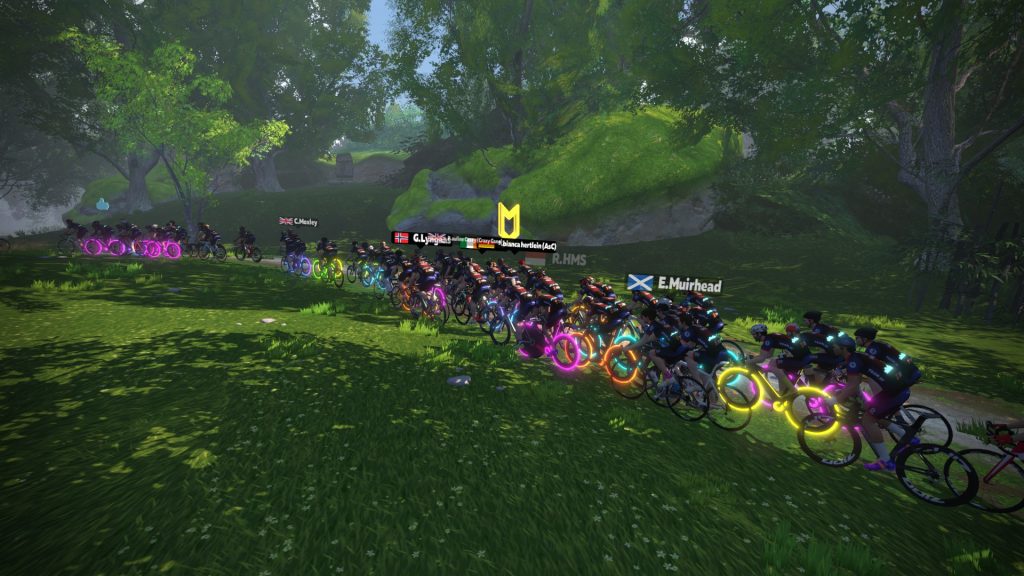
The reality is that both and neither are true. You see Zwift doesn’t ‘favor’ either one, but rather uses complicated algorithms (at least more complicated than I can understand!) to mimic real life physics.
So Zwift is using mathematical formulas to include the use of aerodynamic drag, gravity, size, and weight to affect how fast or slow your avatar moves in any given terrain. Thank goodness for us there are no headwinds, tailwinds, or flesh-eating zombies to batter us around, simple physics is more than enough to beat up our legs…
For example….
- The taller you are, the more aerodynamic drag you have. This slows you down more.
- The shorter you are, the less aerodynamic drag you have. This slows you down less.
- The heavier you are, the more gravity will pull you down when going uphill. This slows you down more.
- The lighter you are, the less gravity will pull you down when going uphill. This slows you down less.
- The heavier you are, the more gravity will pull you downhill. This speeds you up.
- The lighter you are, the less gravity will pull you downhill. This speeds you up less.
- Typically, the bigger you are, you’ll have more momentum and slower acceleration.
- Typically, the lighter you are, you’ll have less momentum but faster acceleration.
OK so now I’ve totally bored you to death and you’re wondering what’s the point.
Yeah me, too, so let me sum it up to create a little more clarity or controversy, as the case may be.
Smaller riders have an advantage going uphill.
Bigger riders have an advantage on downhills and flats.
So yes, Zwift favors lighter riders- to a point. And Zwift favors bigger riders – to a point. Because that’s what physics in the real world does. The key is to know your strengths and weakness and use them to your advantage.
So, if like me, you happen to be a smaller rider, here’s some tips to help you, because being a smaller cyclist can be daunting both IRL and on Zwift! But it doesn’t mean you have to be slow.
In order to that, let’s take a look at how group rides work and how you can navigate them as a smaller cyclist.
How Group Rides Are Categorized on Zwift
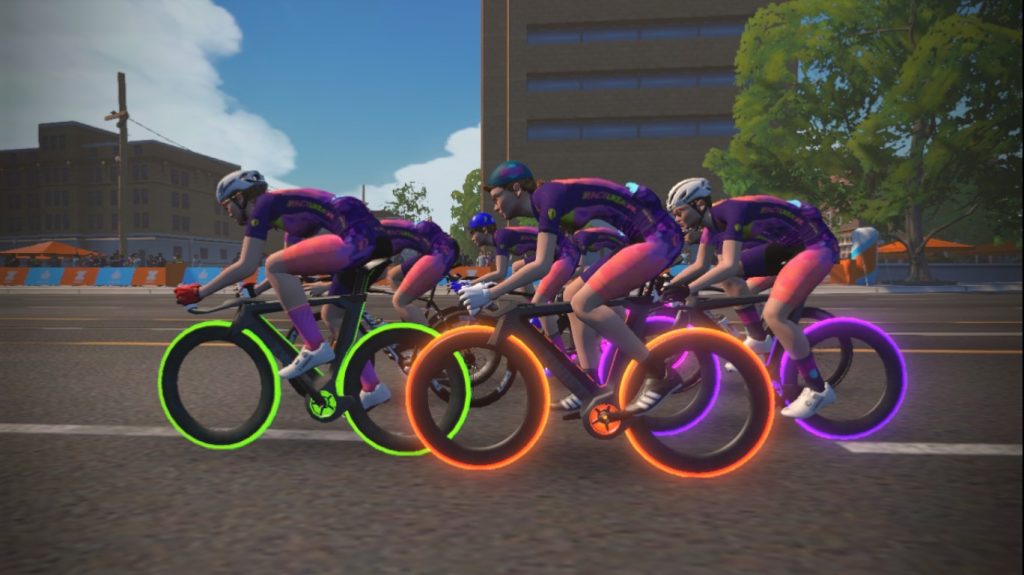
Zwift uses w/kg as a way of categorizing rides. The higher the w/kg, the faster and harder the ride should be. However, this number is loosely based on the w/kg of the ride beacon – the leader! So in order to follow the leader, you’ll put out about the same w/kg if you are about the same size.
So if you’re a smaller rider, like me, you’ll have a little bit of an advantage going uphill in Zwift because you’re lighter. On the other hand, heavier riders will pass you on the descent because the force of gravity will give them an extra edge. And on the flats, pure power is more important than w/kg, so to stay with the leader, you’ll need to more closely match their watts than their watts per kilogram.
Ok so what does this mean?
When choosing a group ride, if you’re around 50 kg, give or take, you’ll probably need to put out about a half watt per kilo MORE than the averaged-sized Zwift beacon. At least I do! So for any given group ride or race, I’ll expect to do a little more than the listed pace. It doesn’t mean Zwift is bad or wrong, it’s just how things are calculated.
How to Stay in the Pack on a Group Ride
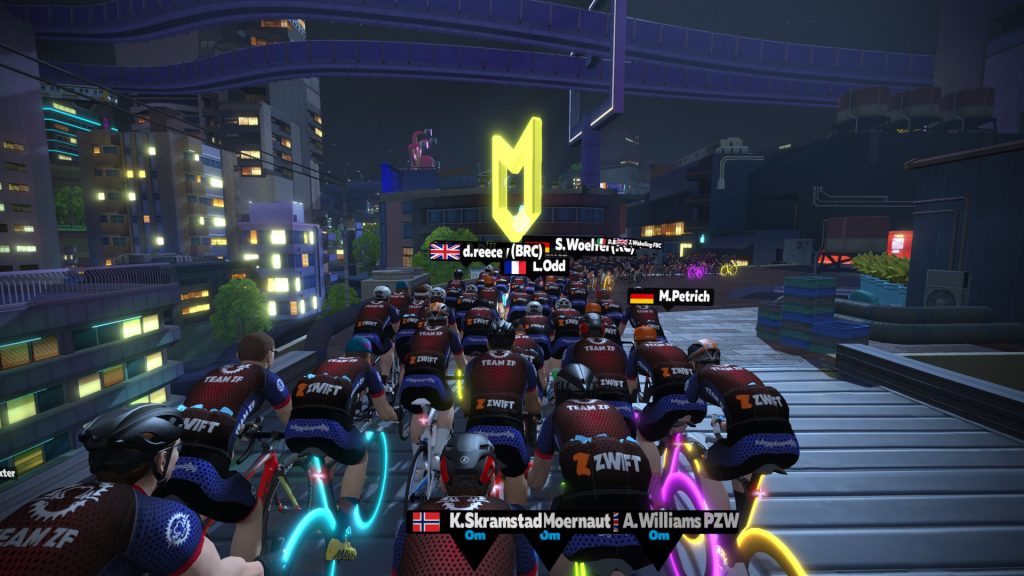
Stay in the middle towards the front of the pack. If you get distracted and slide back, like I often do, you’ll have a better chance of not falling off the back of the pack. If you do fall off the back of the back, it will be super hard to get back on when you aren’t in the draft. Call for a sweep ASAP and kick it into high gear before they get too far ahead.
Catch Up On Climbs
If you need to get back on, climbs are a great way to catch. Other riders will be slower and there isn’t as much of a draft, plus with your small-people advantage, you’ll have an easier time climbing.
How Not to Get Dropped on the Descents
When you’re climbing, push yourself to the front of the pack (without getting zapped by the fence, of course). This will give you a little extra room for the descent.
When the descent comes, you may have to hammer it down just to stay in the pack, so keep your sprint muscles handy! If you’re small, you might have to work harder to stay in the draft on the descent than you would on the ascent. The same is probably true in real life, unless you are very very aero!
This is a great time to use a draft power up or even an anvil, because gravity is not your friend when you are descending. Gravity is friends with everyone bigger than you!
On the flats, I find it easiest to be in the ‘sweet spot’ – that little pack just in front of the beacon but before the red flashy fence. It just seems easier to pedal in this spot. So if I’m on a tough group ride, that’s most likely where you’ll find me.
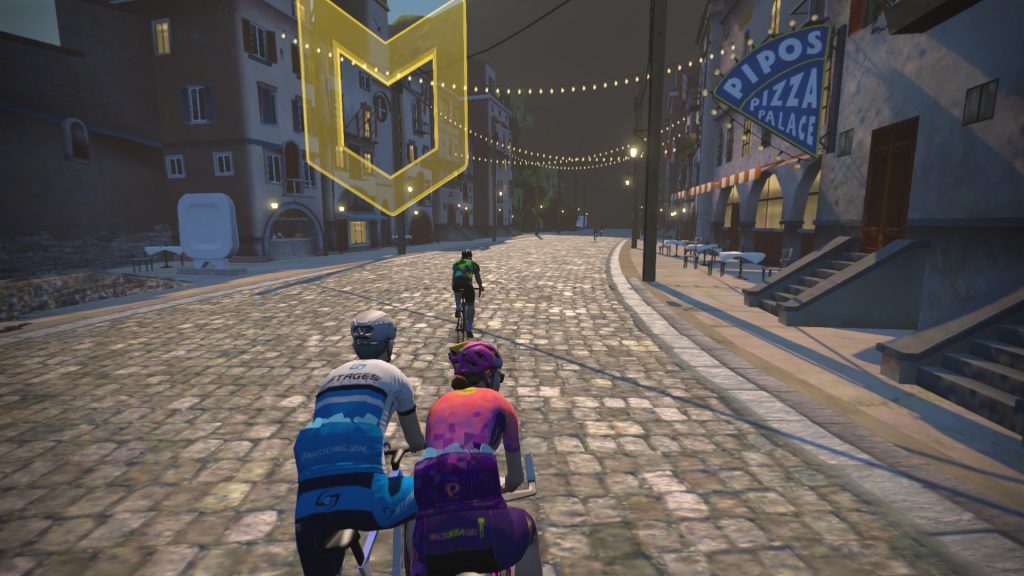
What about racing when you’re smaller in size?
Races can be a little bit tricky, because in order to keep up with the other races, you have to match their watts, not just watts per kilogram (because lots of races are flatter courses). However, to match their watts means you need a higher w/kg, which could technically disqualify you from your category. If you are small, hilly races are your best bet to win, so hopefully you’re a great climber!
You can overcome some of the disadvantage here by riding smart and always staying in the draft – you’ll get faster speed at less watts. Find a little group of cyclists and stick with them except when bridging up to the next group. Don’t waste energy (and having to put out watts that might exceed your category) by riding too long by yourself.
Practice practice practice!
Pace partners are great for practicing. So are group rides! Remember, you may have to join group rides that are slightly lower w/kg than you know you can handle in a workout or solo ride. That’s ok! And if you do join a ride that is too hard for you, just do what you can! In fact, a great way to get faster is to ride with a fast group for as long as you can. Next time, ride with them again, but try to hang on just a little bit longer than last time. Eventually, you’ll get faster and be able to hang with the faster group until the end. If you fall off the back, that’s ok, too! Just keep riding at your own pace and enjoy the rest of the trip.
Remember, no matter your size, just get on a bike and ride!
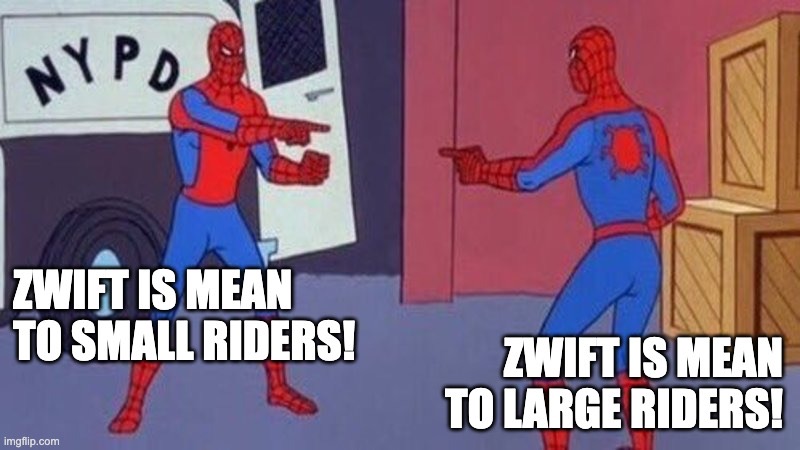
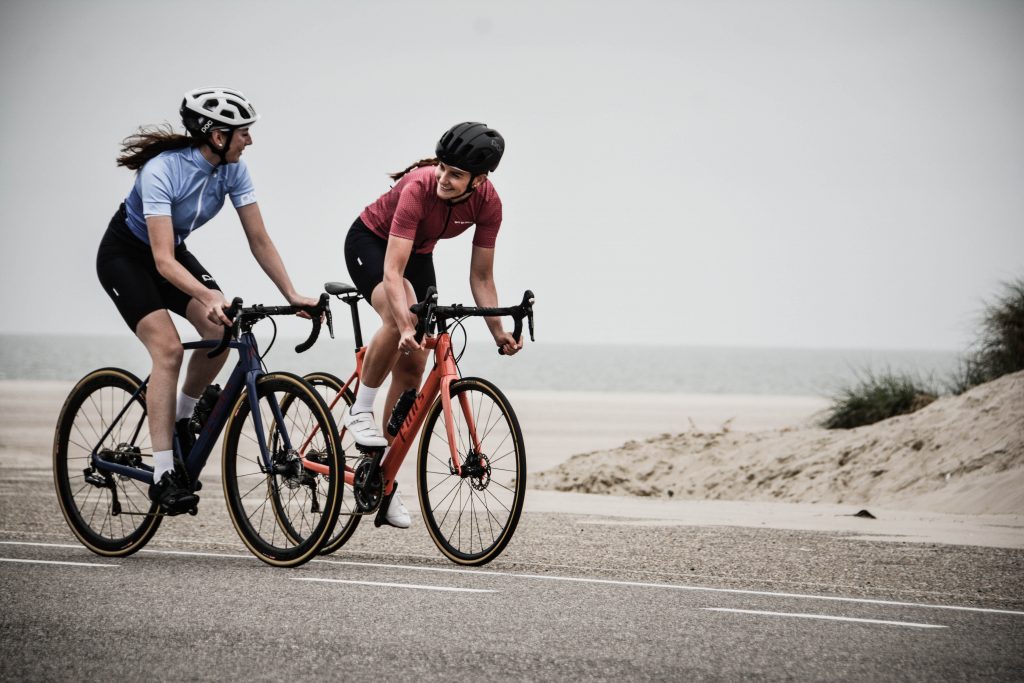
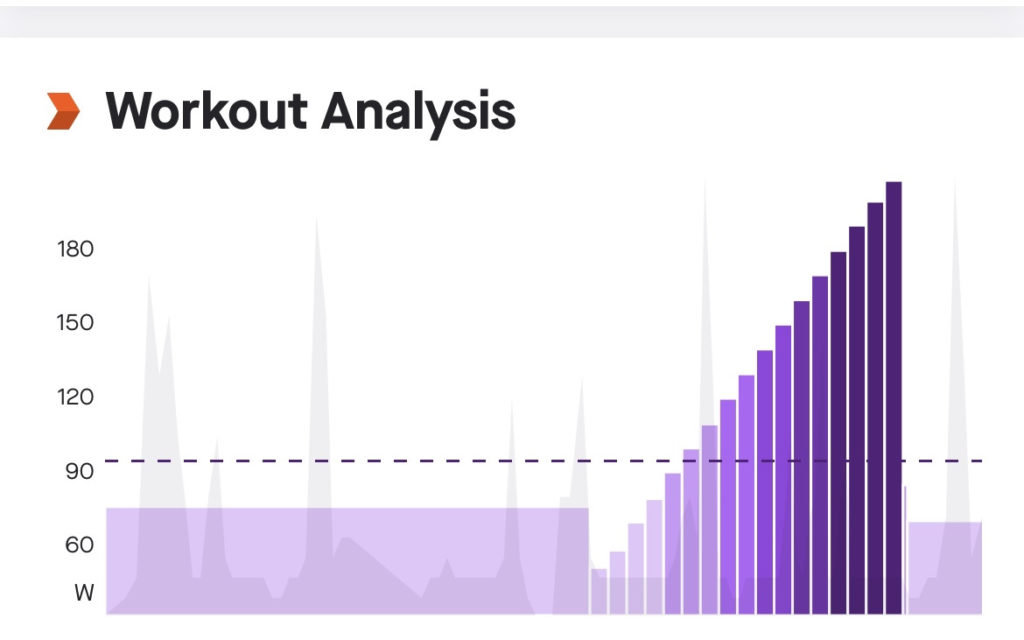
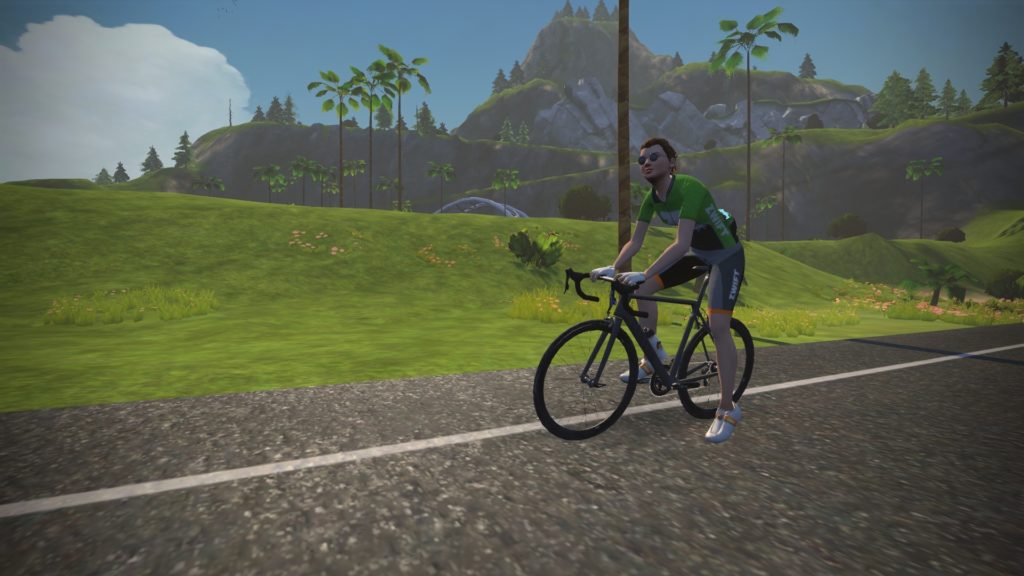
Leave a Reply